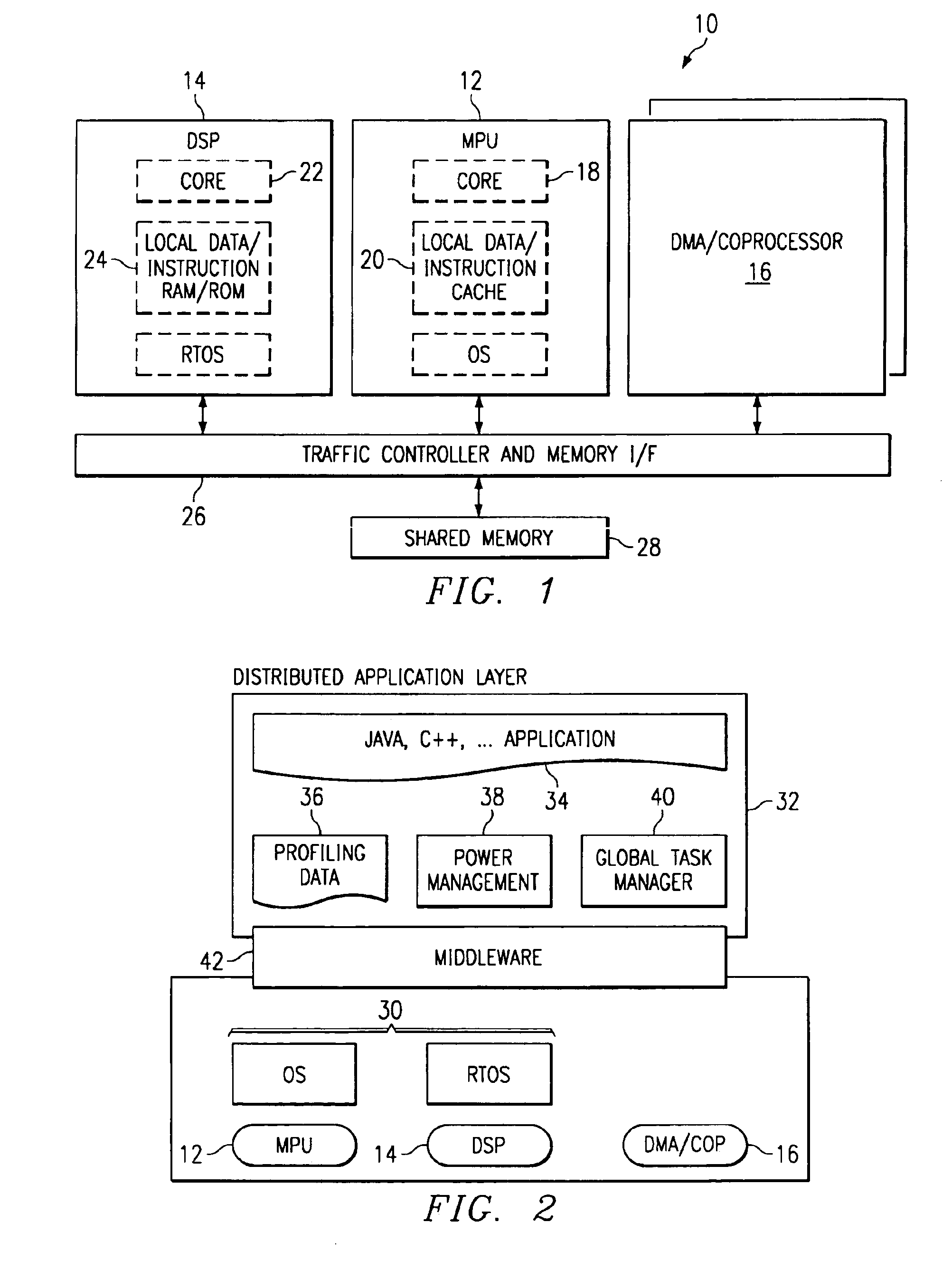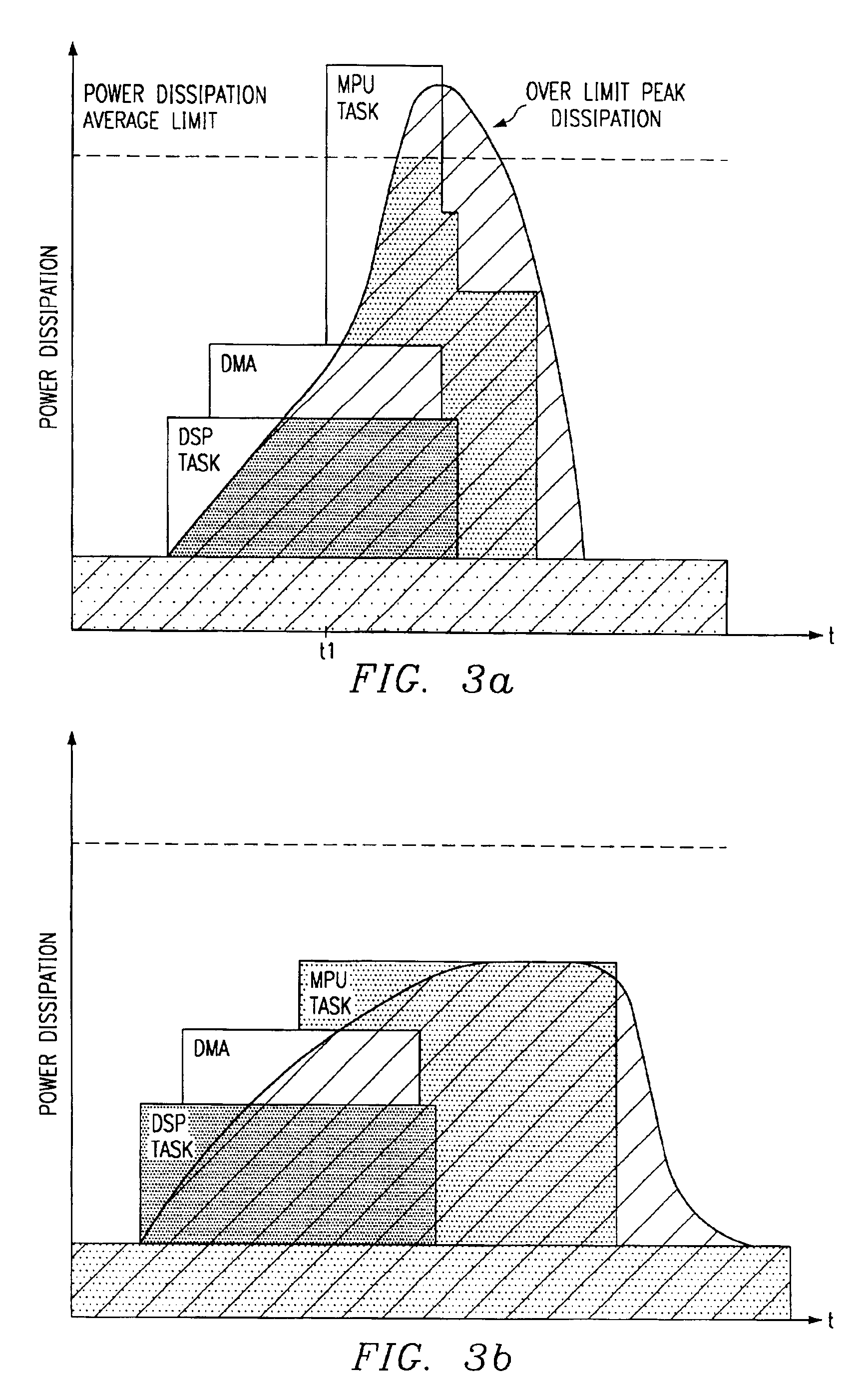Dynamic hardware control for energy management systems using task attributes
a task attribute and hardware control technology, applied in the field of integrated circuits, can solve problems such as system failure, inconvenient recharge of batteries, and serious energy consumption, and achieve the effect of conserving energy
- Summary
- Abstract
- Description
- Claims
- Application Information
AI Technical Summary
Benefits of technology
Problems solved by technology
Method used
Image
Examples
first embodiment
[0038]FIG. 4a illustrates a flow chart describing operation of the power management tasks 38. In block 50, the power management tasks are invoked by the global scheduler 40, which could be executed on the MPU 12 or one of the DSPs 14; the scheduler evaluates the upcoming application an splits it into tasks with associated precedence and exclusion rules. The task list 52 could include, for example, audio / video decoding, display control, keyboard control, character recognition, and so on. In step 54, the task list 52 is evaluated in view of the task model file 56 and the accepted degradations file 58. The task model file 56 is part of the profiles 36 of the distributed applications layer 32. The task model file 56 is a previously generated file that assigns different models to each task in the task list. Each model is a collection of data, which could be derived experimentally or by computer aided software design techniques, which defines characteristics of the associated task, such a...
second embodiment
[0042]FIG. 4b is a flow chart describing operation of the power management tasks 38. The flow of FIG. 4b is the same as that of FIG. 4a, except when the scenario construction algorithm is invoked (new task, task delete, real time event) in step 50, instead of choosing one new scenario, n different scenarios that match the performances constraints can be pre-computed in advance and stored in steps 54 and 59, in order to reduce the number of operations within the dynamic loop and provide faster adaptation if the power computed in the tracking loop leads to current scenario rejection in block 74. In FIG. 4b, if the scenario is rejected, another pre-computed scenario is selected in block 65. Otherwise the operation is the same as shown in FIG. 4a.
[0043]FIGS. 5-8 illustrate the operation of various blocks of FIG. 3 in greater detail. The build system block 54 is shown in FIG. 5. In this block, a task list 52, a task model 56, and a list of possible task degradations 58 are used to gener...
PUM
 Login to View More
Login to View More Abstract
Description
Claims
Application Information
 Login to View More
Login to View More - R&D
- Intellectual Property
- Life Sciences
- Materials
- Tech Scout
- Unparalleled Data Quality
- Higher Quality Content
- 60% Fewer Hallucinations
Browse by: Latest US Patents, China's latest patents, Technical Efficacy Thesaurus, Application Domain, Technology Topic, Popular Technical Reports.
© 2025 PatSnap. All rights reserved.Legal|Privacy policy|Modern Slavery Act Transparency Statement|Sitemap|About US| Contact US: help@patsnap.com



